In this Article:
In this article, we are going to take a look at two hard hitting cartridges that have come onto the shooting scene relatively recently in the broader view of rifle cartridges. The .300 Win Mag vs .338 Lapua Magnum is an interesting comparison, and we think provides some interesting points of discussion.
While there is some overlap in the applications of these rounds, there are also going to be certain shooting situations where one might be better suited than the other. And that’s the goal of this article; we are not looking to claim one of these cartridges is better than the other. Instead, we want to take an unbiased look at the performance of both and use that information to make better decisions of which cartridge will better serve you depending on the situation.
A Brief History
.300 Winchester Magnum
The .300 Win Mag is a 30-cal bullet that came into production by Winchester in 1963. When comparing to other popular hunting rounds, the .300 Win Mag is a relative newcomer, but it has had enough time in the rotation for us to understand its strengths and weaknesses.
This caliber can be packed with large amounts of powder giving it a huge advantage in velocity and in turn, the ability to carry a large amount of energy over pretty impressive distances. The cartridge is also able to be to take a variety of bullet weights. Most weights are within the 150-200 grain range, but there are several lighter and heavier rounds available. It is also available in a wide array of bullet styles which gives it a lot of versatility.
This is an extremely popular caliber for long-range shooters including those chasing big game and those in precision shooting competitions. While this cartridge has been and is still used in sharp shooting corners of the military, the majority of its action is found in the hunting world.
.338 Lapua Magnum
The .338 Lapua Magnum has a much shorter history than the .330 Win Mag. The .338 LM was designed and produced in the late 1980’s. The purpose of this cartridge was to was to provide snipers with a long range round that had incredible terminal ballistics and had the ability to penetrate several layers of body armor at extreme distances. As you can assume, this is a hard hitting round, but it does provide the performance to fill certain shooting niches. It saw service with the military in both Afghanistan and Iraq and is still in use with military personnel today.
The range and terminal ballistics of the .338 LM were such that its use could fill several niches in civilian use including long range precision shooting and big game hunting that required massive power at long ranges. The increased interest in the .338 LM in civilian circuits has resulted in more round options though still limited compared to other competition and hunting rounds. The majority of popular civilian rounds for the .338 LM are going to fall within the 250-300gr bullet weight range, though there are more options when it comes to handloading.
Specs
| .338 Lapua Mag | .300 Win Mag | |
|---|---|---|
| Parent Case | .416 Rigby, .338/416 | .375 H&H Magnum |
| Bullet Diameter | .338†| .308†|
| Neck Diameter | .372†| .339†|
| Base Diameter | .587†| .532†|
| Case Length | 2.724†| 2.62†|
| Overall Length | 3.681†| 3.34†|
| Case Capacity | 114.2gr | 93.8gr |
| Max Pressure (SAAMI) | N/A | 64,000psi |
When we look at the cartridge specs for the .300 Win Mag vs .338 Lapua Magnum we see some immediate differences that will likely lead to differences in how these two cartridges perform. The .338 LM rounds are a larger caliber than the .300 Win Mag and have a slightly longer case and overall length. The .338 is also able to be fitted with much heavier bullets than the .300 Win Mag rounds.
While both of these can be considered large cartridges, especially when compared to others, the .338 LM is at another level. Just look at the amount of powder that can be loaded into the .300 Win Mag vs .338 Lapua Magnum. While factory loads are going to be loaded well below the max capacity, it shows just how much power is possible with these rounds. Both are also able to withstand large amounts of pressure when the powder is ignited, which is needed to push the heavier bullets down range with the proper terminal performances.
The .300 Win Mag can take a withstand a whopping 64,00psi according to SAAMI specifications. While there is no SAAMI rating for the .338 LM, the international CPI rating is 60,916psi though with their safety standards; this means they safely fired the cartridge at psi’s over 75,000psi.
To get an idea of how these two cartridges compare in their ballistic and other performance categories, we need a selection of rounds for each cartridge. We have picked five popular rounds for both the .338 LM and .300 Win Mag that range from range to hunting rounds. We are aware that this is a small sample size compared to the options that are available, but it will still give us a nice window into how these two cartridges stack up against each other in several performance categories. We have listed these ten rounds below.
 300 WM Hornady Superformance SST 180gr
300 WM Hornady Superformance SST 180gr 300 WM Federal Trophy Bonded Tip Vital-Shok 180gr
300 WM Federal Trophy Bonded Tip Vital-Shok 180gr 300 WM Nosler Trophy Grade AccuBond Long Range 190gr
300 WM Nosler Trophy Grade AccuBond Long Range 190gr 300 WM Barnes Precision Match OTM 220gr
300 WM Barnes Precision Match OTM 220gr 300 WM Federal MatchKing BTHP Gold Medal 190gr
300 WM Federal MatchKing BTHP Gold Medal 190gr
 338 LM Hornady SP-RP Interlock 250gr
338 LM Hornady SP-RP Interlock 250gr 338 LM Hornady ELD Match 285gr
338 LM Hornady ELD Match 285gr 338 LM Federal MatchKing BTHP Gold Medal 250gr
338 LM Federal MatchKing BTHP Gold Medal 250gr 338 LM Nosler Trophy Grade AccuBond 300gr
338 LM Nosler Trophy Grade AccuBond 300gr 338 LM Barnes Vor-TX LRX Boat Tail 280gr
338 LM Barnes Vor-TX LRX Boat Tail 280gr
Because we are using such a small sample size for the majority of our discussion, we went ahead and compiled more factory loads for each cartridge. We are a little more limited for .338 LM factory loads but we compiled the data for as many as we could. Our reasoning for this was to provide you with more information and it also let’s us double check the results we see with the smaller sample size and that the results reflect the cartridges actual performance. Basically, it’s our way of making sure there are not outliers in the small sample size skewing the trends and results we will see.
These are factory loads, and the performance data we are looking at comes from the manufacturer’s website and well trusted and accurate ballistic performance calculators. While this is fine for comparing specific rounds, it doesn’t mean that the numbers are set in stone.
Shooting these rounds from your platform might result in slightly slower velocities or different trajectories when compared to this data or even to another shooter. Still, for comparing two cartridges, computer generated data is the best source of comparison and will be consistent from round to round. What we are saying is that the differences in performance here will translate to differences in performance for you when using the same firearms, so the comparisons are still valid in our opinion.
Recoil
While most experienced hunters or competitive shooters are not too concerned with the amount of recoil and we think you can become accustomed to most recoil over time, others still might be, and those with less experience are concerned. And recoil does play a role in choosing a cartridge, especially if you are dealing with a decision on cartridges that can be used for similar applications.
We used a ballistics calculator to generate the recoil energy (ft.lb) generated from firing each of the ten factory loads that we have chosen for comparison. Quite a few factors can influence the recoil such as bullet weight, the amount of powder, as well as the firearm weight. We have kept some of these variables as constants to better compare the two cartridges. We have a 12lb rifle weight for the .338 rounds and a 10lb rifle weight for the .300 Win Mag round to better simulate the weight of firearms you would be using in the field. We have also kept the powder loads constant for each cartridge and used a conservative number since we are dealing with factory loads. At the end of the section, when we look at the averages of our larger sample size, we will also provide the recoil energy when the rounds are fired from the rifles of the same weight.
With that in mind, you can see how the recoil energy can change based on several factors. So while these numbers can vary, the general trend of recoil energy between these two cartridges remains constant.
So, let’s take a look at the recoil energy (ft.lb) between the .300 Win Mag vs .338 Lapua Magnum rounds that we have selected for comparison (Graph 1).
Our first reaction from this graph should be that both of these cartridges produce a good deal of recoil. Enough recoil to easily throw off a shot and enough to become uncomfortable after a short amount of time shooting.
The .338 LM rounds have an average of almost 10ft.lb more recoil energy than the .300 Win Mag even when being fired from a heavier rifle platform. 20ft.lb of recoil energy is thought of as enough to cause flinching and negatively influence shot placement. Several of the .338 LM rounds are double this number while all of the .300 Win Mag rounds are 7-12ft.lb greater.
This is not an unexpected result as we have already discussed the differences in bullet weights and cartridge specs. This high amount of recoil energy is going to be a “necessary evil†to obtain the speeds, range, and power that comes with these two cartridges.
Below, you will find the averages for recoil energy between these two cartridges.
Average Recoil (ft.lb)
| .338 Lapua Magnum | .300 Winchester Magnum | ||
|---|---|---|---|
| 10lb Rifle | 12lb Rifle | 10lb Rifle | 12lb Rifle |
| 45.4 | 37.9 | 24.6 | 20.5 |
With the larger sample set, we still see the same trends and we should all have been pretty confident that we would have. We also have the chance now to see how the recoil energy generated between these two cartridges compare when fired from a rifle of the same weight. The results are pretty easy to interpret. With the same rifle weight, the .338 LM generates nearly double the amount of recoil energy as the .300 Win Mag. And a lot of shooters out there will tell you that the .300 WM has some kick to it. With these results, given the much heavier bullets used by the .338 LM, it will be interesting to see what the velocities look like.
Ballistics
For anyone looking to decide between two cartridges, the ballistics are going to be their main source of comparison. Regardless of whether you are choosing a cartridge for hunting purposes or competing, understanding how your cartridge behaves once shot and their limits is critical to successful shooting.
In this section, we will take a look at several ballistic categories including the velocity, the ballistic coefficient, as well as the short and long range trajectory of the .300 Win Mag vs .338 Lapua Magnum. By looking at these ballistic characteristics, we are going to gain a lot of valuable information to better determine which shooting application each cartridge might be better suited for.
Velocity
The velocity is a critical performance spec for any cartridge comparison because of the influence that it has on just about all the other performance categories we will look at. It influences recoil, it influences trajectory, and it even influences stopping power of the bullet, and that is only the categories that we are looking at specifically in this article. Just by knowing the velocity of the bullet and how well it maintains its speeds along its flight path can tell you a lot about the terminal ballistics such as bullet expansion and at which ranges you can have maximal energy transfer and penetration.
It is a common mistake to think that the maximal velocity you can get out of a round means a better overall performance. Too hot of a round can be dangerous due to extreme pressures and if the round is not paired with the correct twist rate of the barrel, the bullet can be highly unstable in flight. There is a fine balance between maximal velocity and maximal performance. It’s just something to keep in mind, especially if you wander into the world of handloading.
We have compiled the velocity data from the ten rounds from the manufacturer’s website, and when we look at the velocity (ft/s) (Graph 2) from the muzzle to out to 500 yards, we see some interesting points of discussion.
What stands out to us is that there doesn’t appear to be any clear differences in velocity when looking strictly at the .300 Win Mag vs .338 Lapua Magnum cartridges. There are rounds with higher velocities from the muzzle out to 500 yards, but it is dependent on the specific round. The averages from the muzzle might give a slight advantage to the .300 Win Mag rounds, but we are only talking about 200 extra fps, and this trend remains similar out to 500 yards though the difference falls to around 60fps of difference.
While the .338 LM rounds can hold more powder, the .300 Win Mag rounds are not that far behind, and the lighter bullet weights allow them to reach higher velocities without risking destabilization out of the muzzle. The high ballistic coefficients, which we will discuss next, and the increased weight of the .338 LM rounds also allow them to maintain velocity at a slightly higher rate than the .300 Win Mag rounds as they move downrange.
In the table below, we have listed the averages for the expanded round list. We have also provided the average cutoff for supersonic speeds.
Average Velocity (ft/s)
| Yards | .338 LM | .300 WM |
|---|---|---|
| Muzzle | 2776.9 | 2976.4 |
| 100 | 2633 | 2773.3 |
| 200 | 2494 | 2590 |
| 300 | 2359 | 2390 |
| 400 | 2229 | 2236.4 |
| 500 | 2103.1 | 2055.8 |
The average velocities, when we add in more rounds, are near identical to the trends we just looked at. The .300 Win Mag, on average, has a few more hundred fps than the .338 LM rounds. Which is pretty impressive for the .338 LM to be so much heavier without falling that far behind in velocity. It also makes sense given the huge increase in recoil that we just discussed. We also see that the .338 LM rounds tend to not bleed velocity at as a high a rate as the .300 Win Mag. Both are impressive, especially when compared to other hunting cartridges, but just in the context, the .338 LM has the slight edge.
Average Supersonic Limit (Yards)
| .338 Lapua Magnum | .300 Winchester Magnum |
|---|---|
| 1546.15 | 1258.75 |
For two cartridges that excel at long range shooting, and are often used for extreme distance shots, it is important to look at how far the rounds of these cartridges can remain supersonic. The reason this is useful to marksmen is that when bullets fall below supersonic flight, they become more unstable. That’s not to say that they start tumbling all over the place, but they are more susceptible to environmental factors which makes shots past this marker more difficult.
From the averages, the .338 LM has a little less than 300 extra yards of supersonic flight than the .300 Win Mag round. Now, there are of course rounds for both the exceed their average by quite a bit and those rounds that fall below. With both having well over 1,000 yards of supersonic flight, that’s a big advantage to long range marksman.
Ballistic Coefficient
The ballistic coefficient is derived from an equation that includes input variables from specific cartridge specifications. The physics and math behind the ballistic coefficient and its implications, while interesting, is not something we are going to attempt to convey in this article, but we do urge you to check it out.
In the simplest explanation possible, the ballistic coefficient gives you an idea of how well a bullet is streamlined. The higher the BC, the better the bullet can cut through the wind, meaning it resists drag and wind drift and deflection much more efficiently than a bullet with a lower BC. SO, for long range shooting where the wind might be more of a factor, a better ballistic coefficient is something you might be looking for. Even for hunting, where windy conditions are sometimes a factor, having a bullet with a high ballistic coefficient is going to aid in long range shots.
We have compiled the BCs for the ten rounds we are using for comparison and have graphed them here (Graph 3).
From this graph, we see that the .338 LM rounds have on average, higher BCs than the .300 Win Mag rounds. There is definitely some variation between cartridge to cartridge as the .338 LM rounds vary from between .431 to .789. Likewise, the .300 Win Mag rounds vary between 0.481 to 0.64.
Still, both of these cartridges have pretty impressive BCs, and this tells us that they have the potential to be used in long range applications. Let’s examine this further and see if the trajectories also back this up.
Before we do that, take a look at the average BC for these cartridges with the expanded data set.
Average Ballistic Coefficient
| .338 Lapua Magnum | .300 Winchester Magnum |
|---|---|
| 0.654 | 0.489 |
We still see that the .338 LM rounds have quite the edge over the .300 Win Mag when it comes to the BC. Of course, it is an average and as we stated above, there are pretty high performing .300 Win Mag rounds available and there are .338 LM rounds that are closer to the .300 Win Mag average. The takeaway is that the BCs that accompany a lot of these rounds give further indication that both of these rounds can excel at long range, especially the .338 LM.
Trajectory
As with any comparison of two cartridges, the trajectory of their flight path is going to be an area of discussion. As you all know, the flight path of a bullet is not a straight line, and as the bullets move downrange, they are going to be bleed velocity and lose altitude. Buller design and their BCs influence the trajectories as well as velocity. How well a bullet is stabilized also affects the trajectory of the bullet. Flatter trajectories, less bullet drop, make it easier to adjust for long range shots and for two cartridges designed to give long range performance, it’s an important performance characteristic to examine closely.
While both of these rounds are known as having the capability to be used in long range situations, both are also used in a hunting capacity, which means shots taken at a shorter range are probable, so we will also take a look at the short range trajectories.
Before we focus in on specific ranges using our ten selected rounds, we wanted to provide a visual of only two rounds, one for each cartridge, that are made from the same manufacture and have similar bullet weights (Graph 4).
From this example, we see that the .338 LM round is showing an overall flatter trajectory than the .300 Win Mag round with the biggest difference being 10″ at the 500-yard mark. We could widen or tighten this difference by playing around with the bullet weights, and this is a good example of why a larger sample size is needed for cartridge comparisons. Let’s take a look at our ten rounds and see if this same trend holds up.
Short Range Trajectory
We will first look at the short range trajectory out to 300 yards (Graph 5).
We are looking at the bullet drop (in inches) over this range with the firearm zeroes in at 100 yards. And while a lot of people associate these rounds with longer distance shots, we have to remember that these are hunting rounds as well, and with hunting, shots can present themselves at short range at any time. Because of that, there is no harm in looking at the numbers within 400 yards.
At the 200 yard mark, all of the rounds are tightly clustered around the -3†mark though averages give a slight (.5â€) advantage to the .300 Win Mag rounds.
As we move out to the 300-yard mark, we see the different rounds begin to space themselves out. We still see on average, less bullet drop from the .300 Win Mag rounds (-11.16″) versus the .338 LM rounds (-12.92″). At this point, all of the .300 Win Mag rounds show flatter trajectory than the .338 LM rounds with the exception of the .338 LM Federal MatchKing BTHP Gold Medal 250gr round.
Let’s take a look next at the short range trajectories for these two cartridges with our larger data set. We will also take the distance out to an extra 100 yards.
Average Bullet Drop (Inches) at Short Range
| Yards | .338 LM | .300 WM |
|---|---|---|
| 50 | -0.16 | -0.193 |
| 100 | 0 | 0 |
| 200 | -3.4 | -2.9 |
| 300 | -12.63 | -11 |
| 400 | -28 | -25.6 |
We see the same trend of the .300 Win Mag rounds having slightly less bullet drop than the .338 LM rounds at these ranges. Of course, the difference is less than three inches at the 400 yard mark and less than that at all of the previous yard markers. If you were to graph all of these rounds, you would see that there is quite a bit of overlap between the rounds. So while the average indicates that the .300 Win Mag is the flatter shooting round, we think some more advanced statistics and data would be needed to say so for certain.
Long Range Trajectory
Since both of these cartridges are popular in long range shooting situations, let’s take a step outwards out a bit and look at the long range trajectory (Graph 6).
Overall, when looking strictly from an angle of the .300 Win Mag vs .338 Lapua Magnum, there is not a huge difference in the long range trajectory of these factory loads. On average, the .300 Win Mag does have a flatter trajectory with a difference of .78†(300yds), 1.96†(400yds), 3.76†(500yds), 5.74†(600yds), and 8.54†(700yds).
If we look at individual rounds and disregard the cartridge, the four rounds with the flattest trajectory are a mix of two .300 Win Mag and two .338 LM rounds.
Below, you can find the average bullet drop at long range for these cartridges. We have also added a 1,000 yard marker.
Average Bullet Drop (Inches) at Long Range
| Yards | .338 LM | .300 WM |
|---|---|---|
| 100 | 1.78 | 1.5 |
| 200 | 0 | 0 |
| 300 | -7.4 | -6.7 |
| 400 | -21.1 | -19.5 |
| 500 | -41.9 | -39.5 |
| 700 | -107.9 | -104 |
| 1000 | -288 | -295.6 |
When we look at the larger sample set, we do see some differences from previously. We still see that both of these cartridges are very similar in their trajectory and the individual rounds overlap a lot. What is different is that with more rounds, the difference between the averages has gotten narrower by several inches. And once we get out to the 1,000 yard mark, the .338 LM has actually lost less altitude than the .300 Win Mag round. We have seen that the .338LM has excellent ballistic coefficients and we also saw that it maintained its velocity at a higher rate than the .300 Win Mag rounds. It will be interesting to see if this occurs with other performance categories.
So while there are options for both cartridges to give you a flat trajectory, it might come down to whether or not the stopping power is where you need it for your intended game, especially for hunters.
Stopping Power
Stopping power is going to be more of interest for marksman in certain shooting circles than others and more specifically important to hunters since we are talking civilian factory loads.
Stopping power is critical, especially to hunters for several reasons. Responsible hunters will be sure that the shot they are taking and the cartridge they are using is going to dispatch an animal quickly and humanely. We don’t want to have to track an animal for miles, and we don’t want to put an injured animal out there with unnecessary suffering. Understanding the limits of your cartridge will greatly increase your ability to put the animal down quick with one shot.
There is no single measurement that is going to provide a perfect indicator of a cartridge’s stopping power to us. There are several components that go into stopping power such as bullet energy, penetration, and bullet expansion. For cartridge comparisons, we are going to look at the energy and the penetration which includes the sectional density and the bullet momentum. Another important factor in stopping power that has to come into play before any metrics is the user’s ability to put the bullet on target and in the vital area.
While expansion is a huge factor in delivering maximal energy and wound creation, we don’t think it is something to quantify when comparing cartridges. With that being said, we will note that .338 LM do use larger caliber bullet compared to the .308 and when looking at the same bullet, you’re going to have a larger wound created with the larger caliber bullet.
Energy
The energy that is carried by the bullet is only one factor of a round’s stopping power, but it is an important one nonetheless. We know that F=(m)(a) so this tells us that the characteristics of different cartridges are going to give us different terminal performance. If the cartridge can be fitted with larger and heavier bullets and send them downrange at increased speeds (more powder) than they should carry extra force with them. This extra force may or may not be needed depending on the game you are chasing.
This kinetic energy associated with the bullet is transferred to the target on impact and can cause massive damage to the surrounding tissues and organs. This transfer is also affected by how the bullet reacts on impact, such as how the bullet expands. This expansion also relies on velocity, but we will leave that topic for another time.
The amount of stopping power that is thought to bring down game effectively is debatable and shot placement is a key component to this baseline as well. 1,000ft.lb of force is warranted for deer, 1,500ft.lb for elk, and this trend continues as the game size increases.
So, let’s take a look at the bullet energies (ft.lb) of the ten selected rounds (Graph 7).
For this particular category, there is a clear distinction between the two cartridges. The .338 LM rounds have a much higher kinetic energy than the .300 Win Mag rounds throughout the 500-yard range except for the .338 LM Hornady SP-RP Interlock 250gr which falls into the .300 Win Mag range at the 400 and 500-yard mark. We also see that the .300 Win Mag rounds tend to maintain their kinetic energy at a higher rate than the .338 LM rounds. On average we are looking the pretty large differences between these two cartridges; Muzzle (989ft.lb), 100yds (897ft.lb), 200yds (859ft.lb), 300yds (799ft.lb), 400yds (741ft.lb), and 500 yds (688ft.lb).
This will obviously be a point to come back to when we look at the applications of these rounds.
Let’s take a look at the expanded data set and see if these trends hold.
Average Bullet Kinetic Energy (ft.lbs)
| Yards | .338 LM | .300 WM |
|---|---|---|
| 0 | 4593.7 | 3479 |
| 100 | 4131 | 3029 |
| 200 | 3709 | 2658.4 |
| 300 | 3321.8 | 2290 |
| 400 | 2967.9 | 1988.3 |
| 500 | 2644.7 | 1741.3 |
We still see that there is a definite edge in kinetic energy associated with the .338 LM rounds and that is from the muzzle out to 500 yards. From the muzzle out to 300 yards, there is over 1,000ft.lbs of difference between the two cartridges. At 400 and 500 yards, there is only slightly less than 1,000 ft.lbs difference. And as we saw just above, there is some variation within each cartridge, but with such differences in the average, if you want more bullet energy, the .338LM has the advantage.
Penetration (Sectional Density)
Penetration is another component to a bullet’s stopping power. The bullet must be able to penetrate deep enough into the tissue to reach and disrupt vital organs. More penetration does not mean you have a bullet with more stopping power. You also have to think about the type of game you are hunting. A bull moose is going to require more penetration than a whitetail deer.
There are several components that go into how well a bullet will penetrate including velocity, the caliber of the bullet, the weight of the bullet, and the bullet’s design. The caliber of the bullet, as well as its weight, can be used to determine a bullet’s sectional density (SD).
The sectional density correlates with the amount of penetration a bullet will have on target and since we are not looking at bullet types and designs in this article is a good standard for comparison of the two cartridges and the rounds we have selected for each.
A higher sectional density means deeper penetration. As an example, let’s take two different bullets of the same design traveling at the same velocity. Both bullets weigh 100gr, but one has a diameter of .300″ while the other has a diameter of .200″. The sectional density of the .200″ round is going to be higher, and it should penetrate deeper than the .300″ round. This is because the energy driving the bullet is localized to a smaller area effectively pushing it further with less resistance than a larger diameter bullet would impose. That’s the simplest way of thinking about SD and penetration.
When picking out a round for use, it is important that you take into account all of the factors when determining the amount of penetration you will need from your round. For simply comparing cartridges we have left this part out, but understanding your bullet design, how it expands, and the velocity needed for proper expansion and penetration is a huge part of successful hunting.
When looking at the sectional densities of the ten rounds, we have been comparing throughout the article we see the .338 LM rounds generally have a slightly higher sectional density than the .300 Win Mag rounds (Graph 8).
When averaging the rounds between the two cartridges, there is a .05 difference in SD between the .300 Win Mag vs .338 Lapua Magnum.
Though the .300 Win Mag has a smaller diameter, the increased weights of the .338 LM rounds give them higher sectional densities. As you can see, if you go with heavier .300 Win Mag rounds, such as the Barnes Precision Match OTM 220gr, you can get SD similar to the .338 LM rounds.
And as we stated earlier, while looking at the SD is perfectly fine for simply comparing two cartridges, it alone is not a full picture of the penetration the round will show in the field.
Below are the averages for the two cartridge’s sectional density.
Average Sectional Density
| .338 Lapua Magnum | .300 Winchester Magnum |
|---|---|
| 0.337 | 0.284 |
With the larger data set, the results are nearly identical to the numbers that we saw above. The heavier weights of the .338 LM rounds give it a slight edge in potential penetration from the standpoint of sectional density, but the .300 Win Mag SD is nothing to scoff at and is quite high, especially when compared to other cartridges.
Penetration (Momentum)
When we discuss momentum in the context of bullets, we are really looking at a metric for penetration and not how far the bullet is going to throw someone through the air. We are dealing with bullets, not bowling balls. Momentum is simply how well an object, bullet in this case, in motion can stay in motion. The higher the momentum, the better the bullet can overcome resistance such as thick hide and bones.
This is important, especially when dealing with cartridges with a reputation for taking large and dangerous game as you want those rounds to get to and pass through vital organs while causing damage.
We mentioned earlier that the momentum and the sectional density have a lot of influence over the penetration of the bullet. The momentum gives us an idea of how well a round can overcome resistance. If you have high momentum with a very low sectional density that might be because of a wide diameter bullet, the round might not penetrate as well as a bullet with the similar momentum but a higher sectional density. This is because the bullet will be interacting with less surface area to cause resistance.
So, we have calculated the bullet momentum for the ten selected rounds and graphed them below (Graph 9).
We see some clear trends from this data as well. We see that the cartridges for each round tend to group somewhat tightly throughout the range of their flight though there is some drop off for the Hornady 265gr round. Overall, there are are significant differences between the amount of momentum that we see between these two cartridges. And with momentum being a function of mass and acceleration, and the pretty large increase in bullet weights used for the .338LM rounds, we would expect this gap in momentum between the two. We also saw that the difference in velocity was not too much.
And while the .338 LM rounds have pretty impressive momentum numbers, with an average of 108 lb/ft.s of momentum, the .300 Win Mag rounds also have much higher momentum than a lot of hunting rounds. The .300 WM mag rounds have an average of 80lb/ft.s of momentum leaving the muscle and 58lb/ft.s at the 500 yard mark while the .338 LM rounds dropped to right around where the .300 WM rounds started. at 82lb/ft.s. We also see that there is not much difference in how the two cartridges bled momentum. The .338LM rounds lost momentum at a slightly lower rate than the .300 Win Mag rounds.
We will come back to all of this in the application section, but we do want to note that in a lot of cases, either of these cartridges have more than enough momentum to drive a round through the target. Of course, there are other factors, but most of us are not going to run into many scenarios where 100lb/ft.s of momentum is needed and 80lb/ft.s will not be enough.
Let’s take a look at the larger data sets and see if we still observe these same trends.
Average Bullet Momentum (lb/ft.s)
| Yards | .338 LM | .300 WM |
|---|---|---|
| Muzzle | 106.5 | 75.4 |
| 100 | 101 | 70.7 |
| 200 | 95.8 | 64.9 |
| 300 | 90.7 | 61 |
| 400 | 85.7 | 57.2 |
| 500 | 80.9 | 52.6 |
Like we saw with the smaller set of rounds, there is a wide margin of difference between these two cartridges. We are looking at around 30lb/ft.s difference at each yard marker. Both of these cartridges have really high bullet momentum numbers for hunting cartridges, but the .338 is overly impressive. We hit on one of the reasons why the .338 LM was produced and this momentum certainly backs up it’s use to punch through armor.
Accuracy
We always have a bit of an issue when talking about accuracy for two cartridges. The problem stems from a number of variables that go into accuracy that are hard to account for in the data. The best method of measuring accuracy is MOA measurements, but even then, the environment, the firearm, and more importantly, the user can affect what we would determine as the “accuracy†of the cartridge.
And we don’t want to discount this method of demonstrating accuracy. There are plenty of sites with this data that is generated by incredible marksmen and are valuable resources. Others, not so much.
We know accuracy is important and in the end we think when looking at the .300 Win Mag vs .338 Lapua Magnum, both cartridges can be extremely accurate when used with the right platform and in the right hands. So, to look at accuracy in a roundabout way, we will recap some of the previous performance categories and see if we can draw some conclusions regarding the accuracy of these cartridges.
While there was not a clear difference in velocity between the two cartridges, we did see a general trend towards the .300 Win Mag having a flatter trajectory than the .338 Lm rounds, though it was not a huge difference when looking only at the averages. We should also note that there were both high performing and low performing rounds for each cartridge, so there are definitely viable options for both cartridges when you want a flat shooting round. Of course, the .338 LM rounds are also significantly heavier than the .300 Win Mag round and if you need a lot of power, the few inches more bullet drop is worth dealing with.
How this trajectory translates to accuracy can be debated, but we think the slightly flatter overall trajectory of the .300 Win Mag makes it a little easier on you adjusting shot placement for a given range. And in our experience, a few inches flatter trajectory can make a world of difference, especially when you have big game in the crosshairs and the adrenaline is flowing.
We also saw much higher ballistic coefficients for the .338 LM rounds than the .300 Win Mag rounds, though both have high BCs when compared to other types of cartridges. For long range shooting, the increased BCs for several of the .338 LM rounds are better able to resist certain environmental conditions and could result in slightly better accuracy.
Regarding recoil, the .338 LM cartridge produces quite a bit more recoil than the .300 Win Mag. How much this impacts accuracy falls more on the user’s experience, and we’re not going to go into if this would give one cartridge an advantage in accuracy, but it was worth mentioning.
Price & Availability
When we look at the price of these two cartridges, you will notice that neither of them are cheap. Even so, the .338 LM rounds are significantly more expensive than the .300 Win Mag rounds. Hand loading these rounds can save you some money per round, but the materials are still going to be more expensive compared to smaller cartridges. The issue is that if you need the distance and power that these cartridges provide, you’re going to have to fork out some extra cash to obtain them.
When thinking about the availability of these rounds, both can be difficult to come by unless you are at major retail stores that carry a large assortment of ammunition. It’s all about demand, and the .300 Win Mag is still a much more popular hunting round than the .338 LM which means manufacturers are making more of .300 Win Mag rounds. Both can be frustrating when trying to find specific loads in retail stores, but luckily the internet has made that a bit easier.
| Ammunition | Price (20 Rounds) |
|---|---|
| 300 WM Hornady Superformance SST 180gr | $30.99 |
| 300 WM Federal Trophy Bonded Tip Vital-Shok 180gr | $46.99 |
| 300 WM Nosler Trophy Grade AccuBond Long Range 190gr | $48.99 |
| 300 WM Barnes Precision Match OTM 220gr | $48.99 |
| 300 WM Federal MatchKing BTHP Gold Medal 190gr | $52.99 |
| 338 LM Hornady SP-RP Interlock 250gr | $79.99 |
| 338 LM Hornady ELD Match 285gr | $85.99 |
| 338 LM Federal MatchKing BTHP Gold Medal 250gr | $117.99 |
| 338 LM Nosler Trophy Grade AccuBond 300gr | $134.70 |
| 338 LM Barnes Vor-TX LRX Boat Tail 280gr | $112.99 |
Applications
Now that we have taken a look at the performances of the .300 Win Mag vs .338 Lapua Magnum for several categories, we can begin teasing apart in which situations each cartridge might be better suited. We have also provided all of the average tables that have been seen throughout the article in this section for easier viewing as we move through the applications of these two cartridges.
Let’s start out with talking precision and long range shooting. From just the aspect of factory loads, the .300 Win Mag gives a slightly flatter trajectory, though there are rounds for both cartridges that behave very similarly in long range trajectory. With that, the .338 LM rounds have the advantage when it comes to hand loading as they can be loaded slightly hotter and the heavier bullet and higher BC might sway you towards it as your long range cartridge of choice, but we could easily make the argument for the .300 Win Mag as well. We think it all comes down to what you have the most practice and experience with. With enough hours on the range, you can do some pretty amazing things with both of these cartridges out to 1,000+ yard ranges.
You also have the recoil to consider. From just a couple dozen rounds, the .338 LM cartridges might be more fatiguing to you than the .300 Win Mag though both can be uncomfortable when used by less experienced users.
For hunting, both of these cartridges carry a considerable amount of bullet energy and potential penetration for large game. They also are large enough cartridges that with proper expansion you are going to have enough of a deep wound creation for a quick kill with a properly placed shot.
The .338 LM is better reserved for larger game, and we are talking moose and larger, like Africa Big Five larger with over 3,500ftlb even at 300 yards. It can be used for elk and moose and might be useful if you are taking shots greater than 400 yards though those ranges tend to be on the limits that most hunters are willing to take shots at. With large and dangerous game with thick hide, the huge amount of momentum and the high sectional density of the .338LM rounds are going to make getting the round through the vitals much easier. With the amount of stopping power these cartridges have, it is overkill for deer and other medium sized game. The drawback to this cartridge for hunting has to do with the firearm. It’s going to be tough hauling around a 12-15lb weapon in the field. If you’re driving out to a spot to sit, it doesn’t matter, but for hunting situations where you might be logging a couple of miles, that extra 15lbs is going to be fatiguing.
The .300 Win Mag is also a long range, big game firearm. All of the cartridges we looked at in the article had bullet energies of well over 1.500ft.lb at 500 yards. And while the amount of momentum generated with these rounds might seem weak compared to the .338 LM, in reality, they have more than enough and sometimes way more for just about any hunting scenario. Our knowledge is more limited with exotic game, but it’s hard for us to believe the .300 Win Mag wouldn’t be appropriate in most situations. We have seen plenty of deer and other medium sized game taken with this rifle at 300+ yards. Some hunters have issue with the recoil for this sized game since just as effective rounds can take deer with much less kick. To each their own, but the .300 Win Mag is going to give you more range along with more power and flatter trajectories than most other hunting cartridges used for the same game. The .300 Win Mag is also more than capable of taking larger game such as elk and moose at these ranges as well.
Best Rounds
Before we wrap up this cartridge comparison, we do want to take a few moments to outline a couple of our favorite factory loads for each cartridge for certain shooting categories. We are only basing this decision on our ten selected rounds so that as you read, you can go back and compare with the graphs. Like anything, you’re favorite round might be completely different from what we outline here and as long as its getting the job done and your happy with its performance, go with it.
Top Hunting Round
One of our favorite and most successful rounds for hunting elk and moose is the .300 WM Nosler Trophy Grade AccuBond Long Range 190gr. There are numerous reasons why we lean towards this round including the terminal ballistics and the stopping power. This round maintains over 2,000fps throughout a 500-yard flight which is more than enough to cause proper expansion of the ballistic tip bullet. This speed along with the sectional density is going to be more than enough to penetrate to and through vital organs of big bull elk and moose at long ranges. It also has one of the flattest trajectories of all the selected rounds we looked at and the highest BC of all the .300 Win Mag rounds.
For the .338 LM we think big game hunting, and for taking down large and often dangerous game, we lean towards the Nosler Trophy Grade AccuBond 300gr. This round has a muzzle energy of 4,677ft.lb and still carries nearly 3,500ft.lb of energy at the 300-yard mark and 2,842ft.lb at 500 yards. The SD and velocity paired with the controlled expansion of the heavy 300gr AccuBond bullet make this a deadly round for big game at a wide selection of ranges.
Top Target Round
While most competitive long range shooters are going to be using hand loaded rounds, we still wanted to discuss some our favorite factory loads for long range shooting.
For time on the range looking to pop targets at long ranges, we like the .338 LM 285gr Hornady ELD Match. Of our selected .338 LM rounds, the Hornady ELD Match maintains its velocity at a high rate through 500 yards and will remain supersonic well over 1,000 yards. It has an incredible G1 BC of 0.789 and shows one of the flattest trajectories of all the rounds we examined making shot adjustments much less severe.
The .300 Win Mag, one of the flattest shooting cartridges available, and especially when maximized with hand loading has several excellent factory loads for long range shooting as well. We enjoy the 190gr Federal MatchKing BTHP Gold Medal round for this application. This round has the second flattest trajectory of all the ten rounds we have looked at in this article and maintains well over supersonic velocity out to 1,000 yards. The 190gr BTHP bullet its BC is able to resist drag and wind drift well enough to be put on target at 700+ yards. As with most factory loads, they do fall short of the maximal distance that you can obtain with hand loads.
Special Offer: Join our private community and get exclusive gun deals, handpicked gear recommendations and updates on law changes, every day!
Join our private community
Conclusion
As with most cartridge comparisons, a lot of the decision eventually comes to what you are comfortable using and what you are confident in using. With that, there are situations where one cartridge might be a better option than others.
In this article looking at the .300 Win Mag vs Lapua Magnum, we hope that the data presented and discussed has outlined which applications both of these cartridges are better suited for and given you a better resource for making that decision.




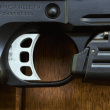
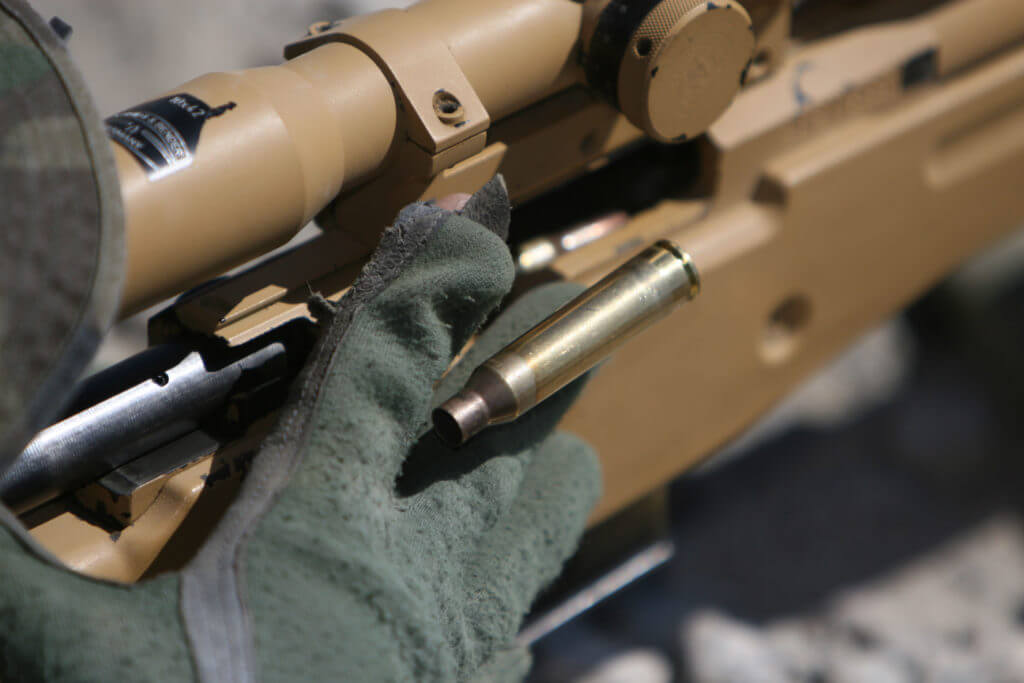
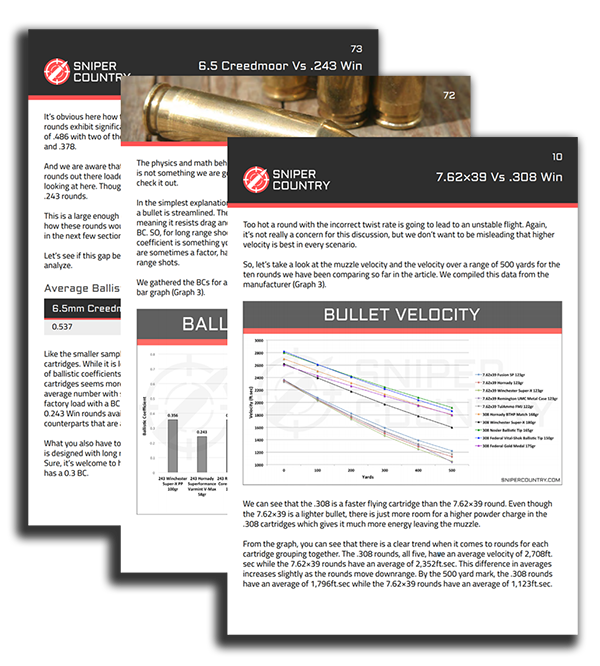

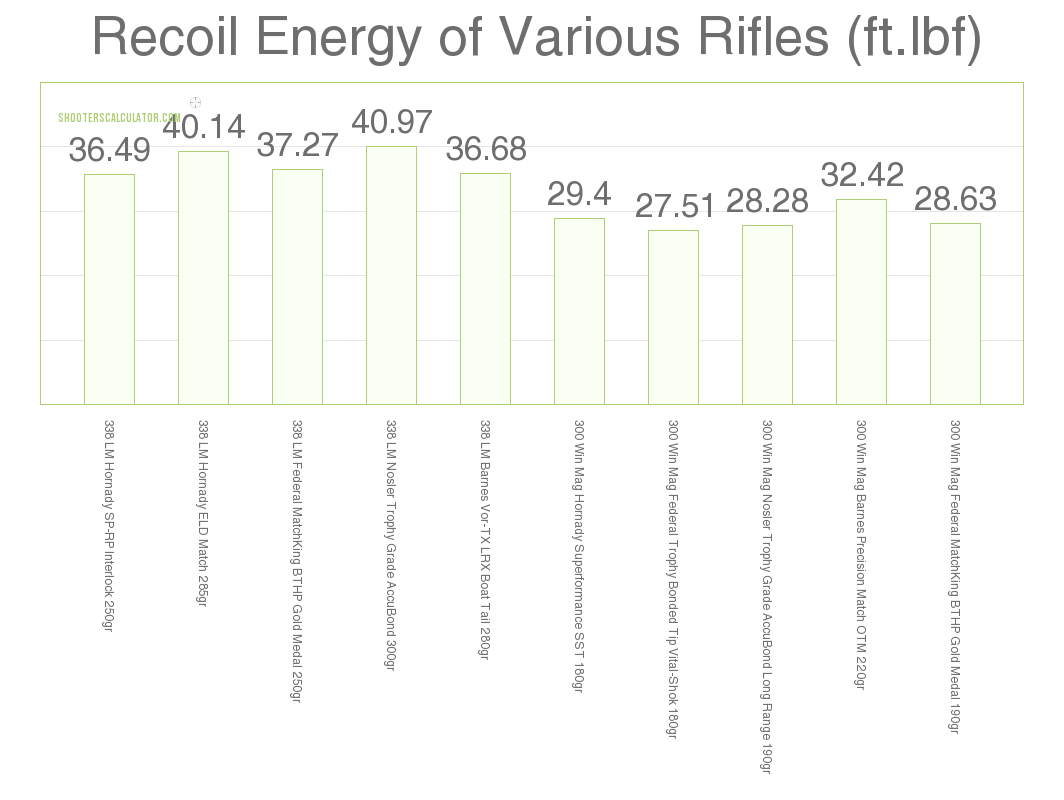
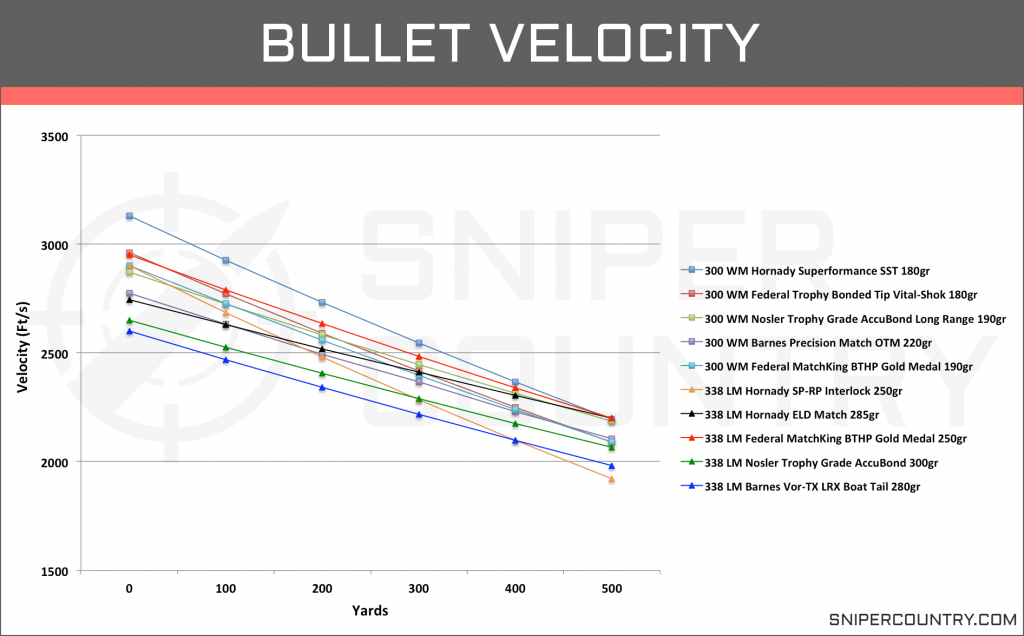
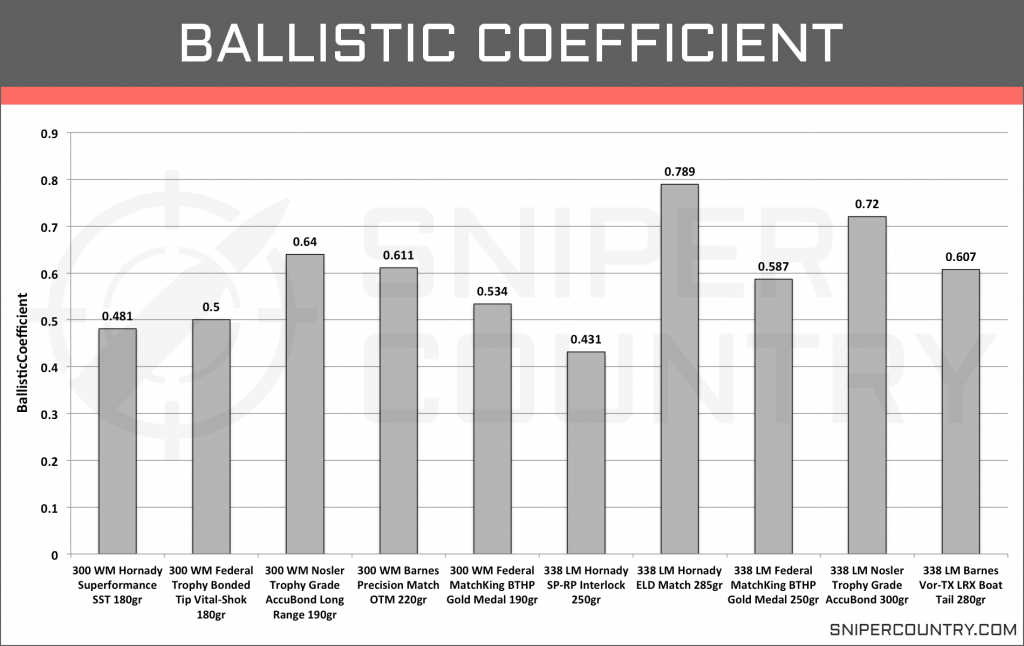
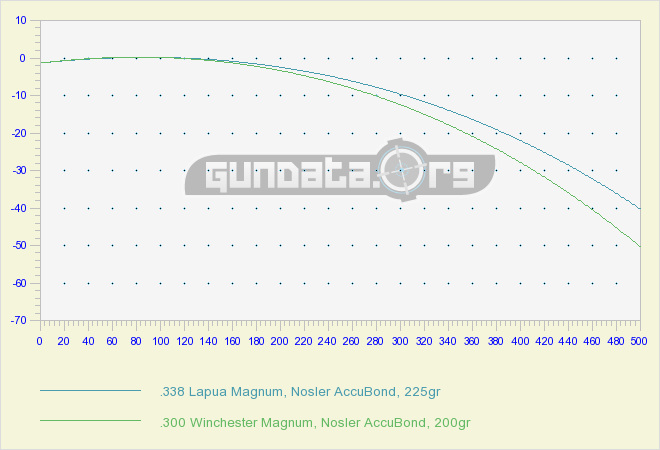
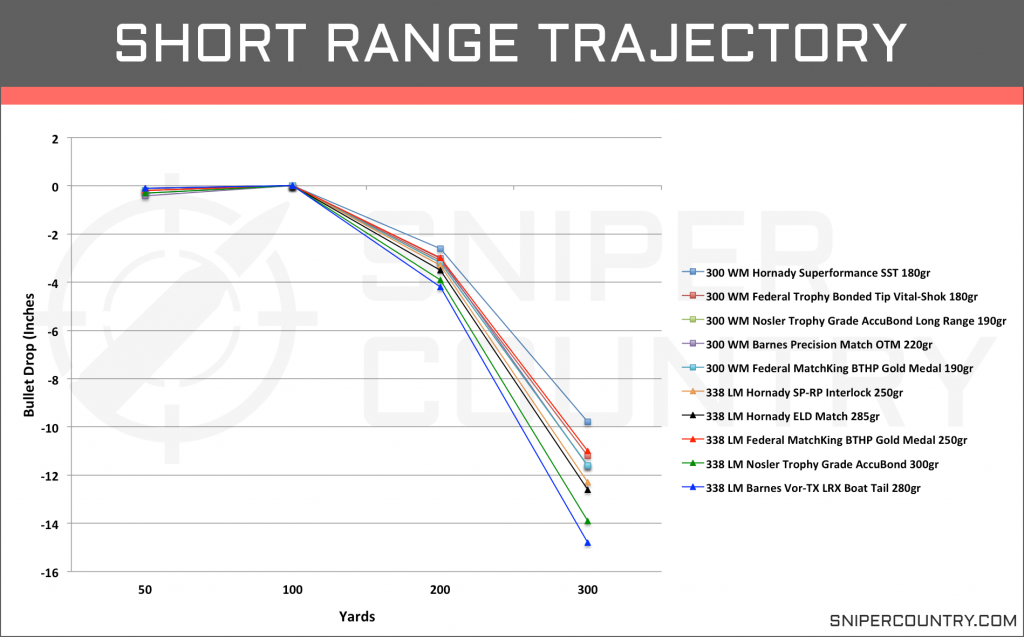
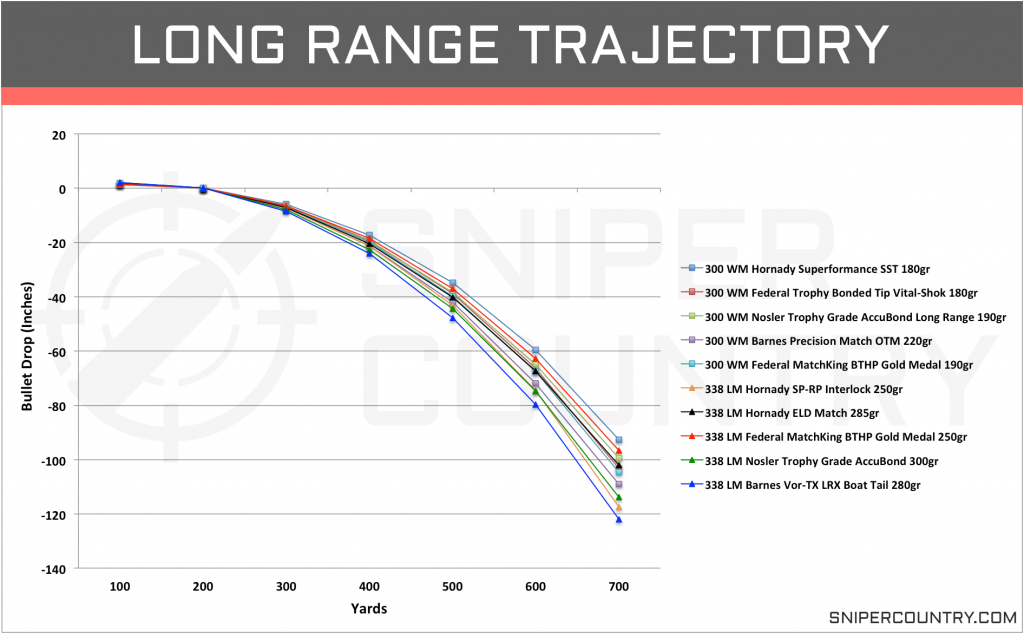
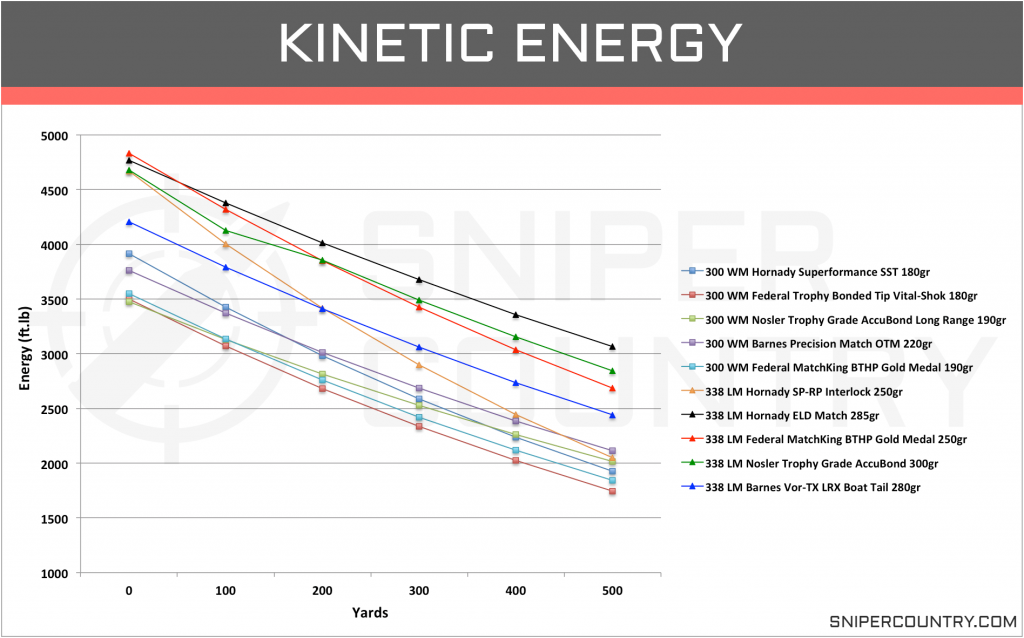
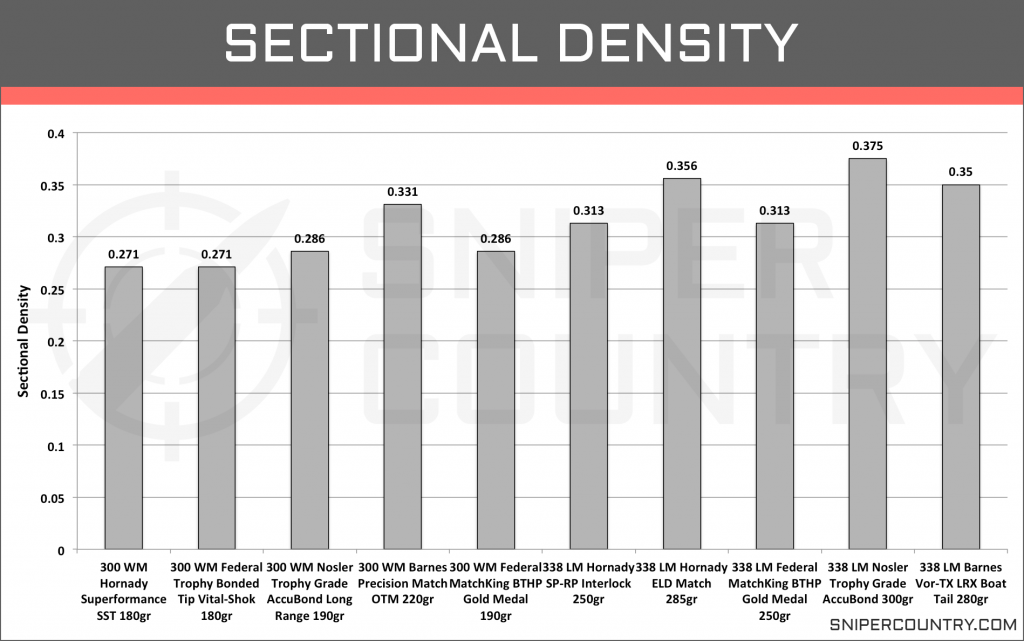
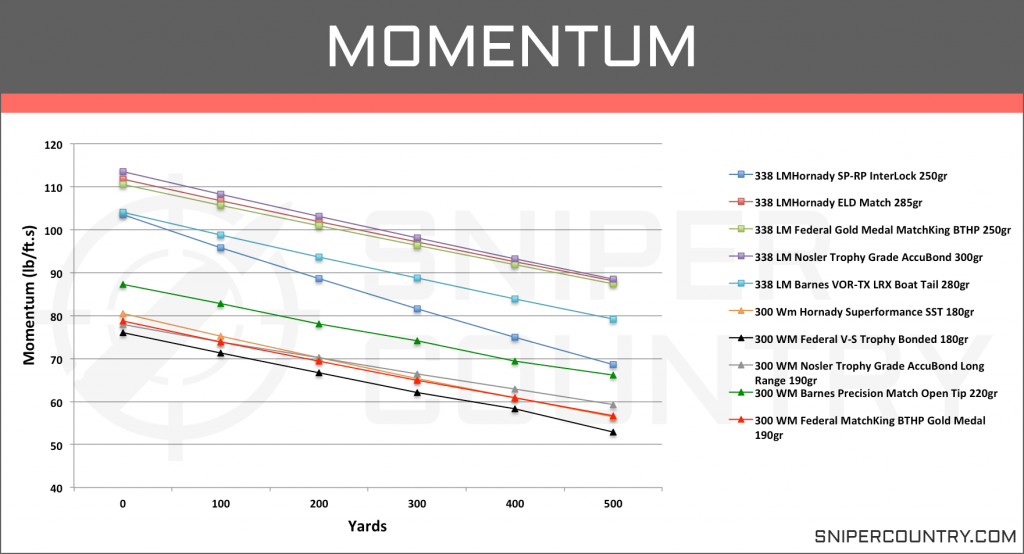

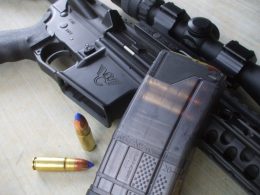
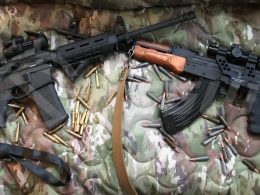
Good job thank you.
I have been tossing the idea around 300 win mag or 338 lapua to purchase, this article was fantastic thank you. from what i can see in the data there is not really that much difference in performance and yes it depends on the bullet choice. what it comes down to for me is the cost of the ammo and availability of it. I reload a lot and the cost is still important to me as well. I can not justify the cost of the 338 lapua over the 300 win mag in the facts of would be gained. thank you I going with the 300 win mag.
Excellent article… thanks for putting the time into this.
Great article! Thank you!
I was close to buying a .300 Winchester Mag. rifle, but still wanted to see if the .338 Lapua Mag.’s performance justified the higher cost (rifle & ammo). After reading this informative & well-written article, for me the answer is no.
that is my conclusion, as well.
does the 338 lapua cartridge lend itself to reloading?
Per, to answer your question. Very much so.
The Lapua cases are excellent and can be reloaded 15 to 20 times which greatly offsets their initial cost. I know of no other cartridges that have cases of the same quality. The expansion at the base of the cartridge after firing is minimal. 3 to 4 thousandths. Not necessarily because of chamber dimensions but particularly because of the quality of the brass. The cases are easy to size. If one reloads, then the cost of shooting a 338 LM becomes far less significant than if one doesn’t. It is actually on par or close to it to the 300 Win Mag except for 10 to 15 more grains of powder that one uses on average for the LM. It can be downloaded to reasonable levels. My experience with it and I have both rounds, is that both are very accurate. The LM is exceptionally accurate.
Lastly, the author didn’t have room to include another 10 or 20 factory loads for each round. There are 338 LM factory boxes of great quality priced at under 3 dollars per round. There are also long range bullets with very high B.Cs that one can use to reload that change the game completely, for instance; the 265 Accubong Long Range from Nosler with a B.C. of .723 it can easily be pushed at 2900 fps in a 26-27 inch barrel, let alone a longer barrel. There is a very vast choice of bullets between Hornady, Nosler, Barnes, Berger, Sierra and a few other manufacturers that turn in excellent quality bullets. The 338 LM lends itself very well to reloading. The Accubond Long Range example I used is one of so many great bullets available for reloading that there is at minimum a choice of 3 dozens or more if one doesn’t even look beyond the manufacturers I mention above and sticks to 225 grains and above. The ballistic coefficients get very high starting at 250 grains. Nosler’s E-tip 225 grains is at .611. Barnes 250 grains LRX at .602 and these are the low end of high B.Cs. The choice is vast.
The 338 LM is actually a natural for reloading. It shoots very well with a variety of different powders and doesn’t require the top end of powder charges to be extremely accurate. Hotter loads with these bullets can easily surpass the flatness of shooting of the 300 Win. Mag. I have found in my setup that for high speed, the best range is 225 grains to 265 grains. Not the ultra lights and not the heaviest that can’t be pushed fast but retain an amazing amount of energy way out there. Some of these combinations keep a bullet supersonic well past 2000 yards…
Paul
Excellent info ! Now have you gotten your hands on a 300PRC and done the math? Its really looking to be the new hot round for this long distance shooting at a much lower cost in recoil and dollars! I’m just curious as I am saving up shiny pieces to get a Ruger PR in the 300PRC and I may have enough left over to buy a Dillon reloading press vs going for a real nice 338Lapua rig and ammo. I dunno just call me cheap bastad !
The 300 PRC is a fantastic cartirdge IF you don’t mind rebarreling every 800 rounds. I scoped a bore yesterday that had less than 500 rounds down it (factory ammo) and the lands were torched – completely burned down a couple of tenths. The owner thought he had copper or carbon fouling issues…turns out he has a lack of rifling issue instead.
Take in account. Where can you shoot a 338 Lapua? It’s $10-20 each time you pull the trigger. For civilians. 338 isn’t worth owning.
Great job in making a fair and very complete analysis based on factory loads.
The author did mention that there are a variety of factors that influence recoil but he forgot a very important one which is speed of projectile.
There are four elements that affect recoil and can be entered into a calculation.
Weight of powder (not its burning rate).
Weight of projectile
Speed of projectile
Weight of firearm
Well done. I have a couple of 300 win mags, now with what I’ve read I need to put a 338 LM in the rack as well. I thank you, I hope my wife doesn’t make another count.
Hands down, the best comparison I’ve ever found. Thank you for putting the work in.
Not a terrible article, however the utilization of a G1 standard to define the ballistic coefficient of these two projectiles is inaccurate. The G1 standard is applied to flat based projectiles. The G7 standard is more in line with the boat-tail profile/contour of the projectiles in the article. Manufacturers tend to utilize the G1 standard for advertisements in order to show a “big number” to the ill-informed. An example is Hornady’s 230gr .338 ELD-X. The G1 BC is listed at .616, whereas the G7 BC is “only” .310. The application of the correct ballistic coefficient/standard is crucial for formulating drag functions to predict trajectory.
Being retired military both enlisted and Officer the services need a far better platform than the POS puddle shooter M-16. God knows the number of soldiers and marines killed by that weak and jamming weapon. The word is out that the DOD are finally giving today’s soldiers one of these rifles. The AR platform can be beefed up to accept either of the rounds. The rifle should be limited to no more than a three round burst and accuracy should be emphasized.
Great article! I’m currently looking at picking up a RPR Gen3, which now comes chambered in .300WM and .338 LM. I have the RPR Gen 2 in 6.5CM and absolutely love it. I guess the only thing that I would have liked to seen you touch on would have been wind variables between the 2 cartridges. Elevation and MV seem to be very easy to account for with today’s technology. However, wind is still always going to play the biggest variable for dialing in those long ranges.
But thank you for the article. I greatly enjoyed it!
Did you get the Ruger Precision Rifle in 338 or 300wm? I am now saving my nickels to buy it in 300PRC myself . How did you like it if you did? I am amazed at the performance of the 300PRC at 1.60 a round and having it available everywhere. Most loads are 95% of the 338 and if you handload it is looking to overtake the 338 in many areas of performance . Call me an old tight bastad, but I like the savings too! Not to mention 40% less recoil.
OK now do this again with a 300PRC and the 338 Lapua! No I know that was a great article and took some heavywork! Seriously the glorious 338 Lapua makes no sense for me anymore, unless you have a half mile range, and Only reload (to try to lower cost and maybe get a bit better performance.) Even still its hard to justify the 338 rounds are way more money, and the newer 300PRC bullets are pushing it past the 338 Lapua capabilities with way less recoil. I am ordering a Ruger 300PRC as soon as I can fund it, and I have nowhere to shoot past 600yds in Mo.
Awesome article
Good article however as an owner of both these calibres the extreme difference in cost does not match the relatively small difference in performance. One point also that never seems to get enough emphasis is that these rounds are dropping around 24 feet at 1000 yards! 24 feet!
This article might be a little old but I wanted to say thanks for a good comparison. I haven’t fired a 338 but have years with my .300 WM. From the bench it takes concentration to overcome recoil effects, in the field you hardly know it fired. I can’t help but think a suppressor would be a game changer on either from the bench. Happy shooting, CW
Thank you for a very comprehensive article.
I would have liked a hint on difference in “over the counter” price of the cartridges, and perhaps of a few guns (official MRRP) in order to better evaluate “which one is a better upgrade from a 308?”
Thank you.
Wow – great article. So thorough.
With the 3.85 magazine length for the 300 Win Mag in the Ruger RPR it is a no Brainer if you reload.
Besting the 300 PRC and the 338 Lapua
As a late comment I liked the article. I am interested in long range shooting and have been looking at both these calibers. I would have preferred to see that considered separately from hunting, which is a very different activity. Hunters might consider something around 500yd as far as they might humanely shoot, while long range shooters might look at bettering a mile. Hunters need ammo that will expand at termination, long range doesn’t care. Hunters usually have to carry their gun, long range sets up and leaves it there so weight and therefore recoil is not really an issue. Averaging factory loads across both doesn’t really do justice to either. I have also been looking at reloading these, but that is probably a different article.